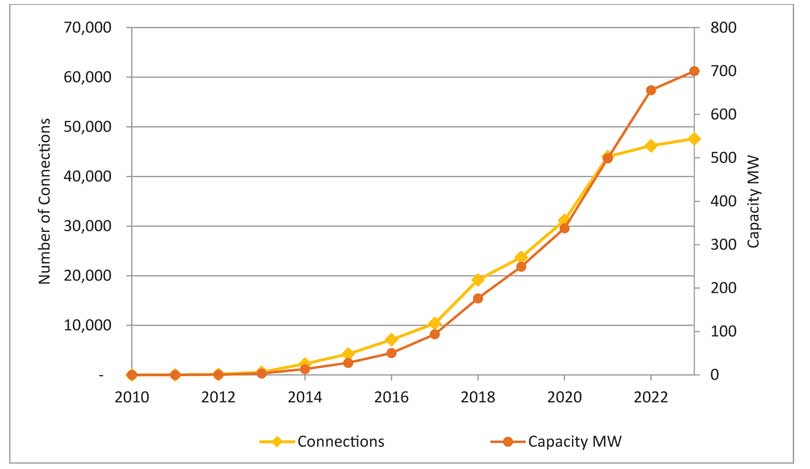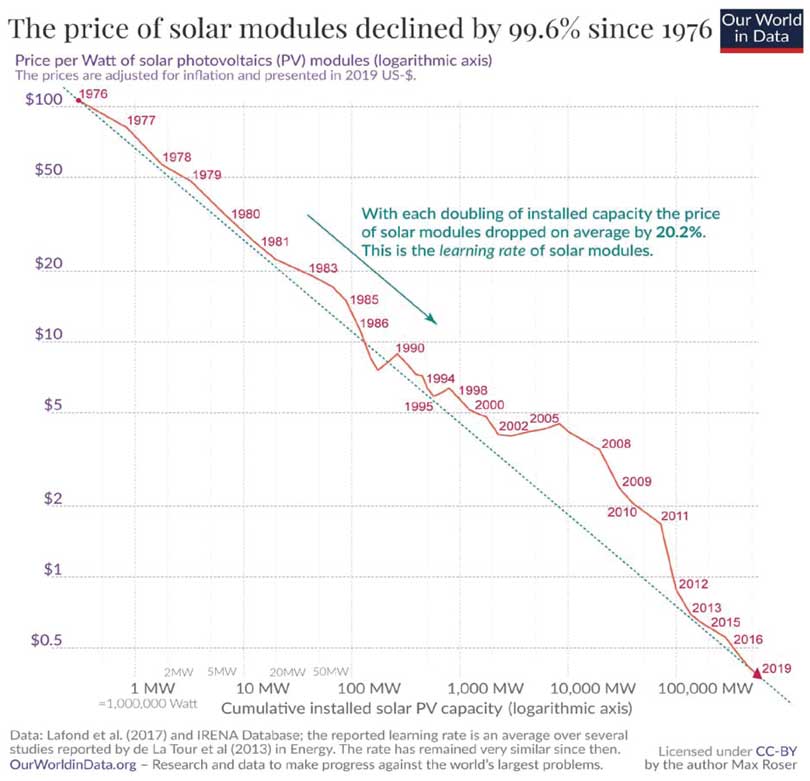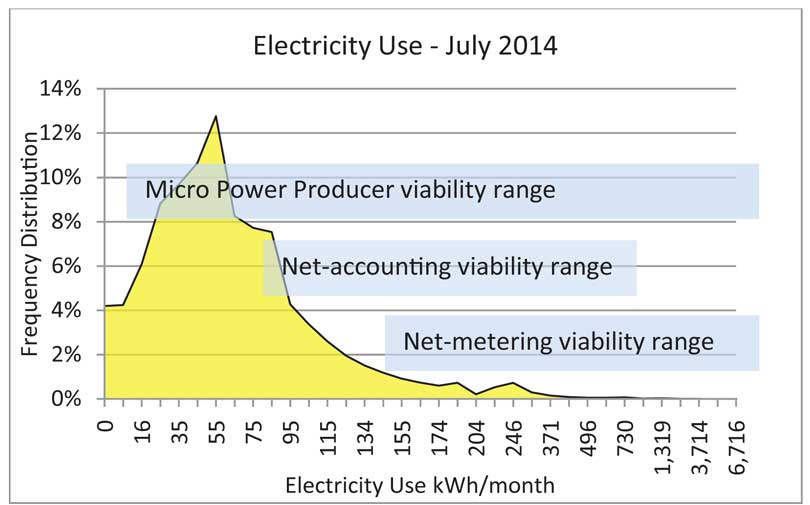Thursday Oct 30, 2025
Thursday Oct 30, 2025
Wednesday, 26 June 2024 12:35 - - {{hitsCtrl.values.hits}}



Sri Lanka Sustainable Energy Authority (feedback [email protected])
There is no doubt that the rapid progress realised by the rooftop solar programme of Sri Lanka due to the pandemic and thereafter the economic conditions suffered a lot. With some cooling down effects in the national economy, the sector is all set to make a comeback. Both electricity utilities; Ceylon Electricity Board (CEB) and Lanka Electricity Company (LECO) now host large capacities of solar rooftops in their respective distribution networks. Sri Lanka is all geared to realise an 800 MW capacity addition from rooftop solar by end of this year.
The two schemes introduced in 2016 which were extensions to the net-metering scheme dating back to mid 2010, named the Net-Accounting and Net Plus, offered added advantages offered to customers before the recent tariff hikes. With the new tariffs, net-metering scheme has emerged as the favourite scheme. These three schemes may appear to the uninitiated as very similar to each other, but are significantly different in terms of commercial structure.
Net-metering – The same scheme which was on offer from 2010 June 30 continues for the 13th year. In this scheme, homes that use more than 90 units of electricity per month can find a good investment opportunity, where the money invested will be paid back (in the form of saved electricity bills) in less than a five-year period. These homes are required to install a bi-directional energy meter to measure the electricity imported from the national grid on one direction and to measure the electricity exported to national grid from the rooftop solar PV generator. If the amount of imported electricity is less than the amount of electricity exported by the customer, no payment was made to the customer, but they were allowed to carry forward the energy credit up to a period of ten years. Within this ten year period, the customer can use the energy credit. In the event where imported amount of electricity is more than the amount of electricity exported by the customer, the monthly bill is prepared on the amount remaining after deducting the exported amount from imported amount. Incidentally, this scheme is available for all types of renewable energy resources such as micro hydro and small wind.
Net-accounting – In this scheme, most of the features of the net-metering is taken in, with the exception of carrying forward energy credits. When electricity import is greater than the export, the scheme will continue to calculate the bill based on the difference between the import and the export. However, if there are more exports than imports, the customer will be paid LKR37.00 for a unit of such exported electricity until the end of the twenty-year contract. This scheme was designed to encourage customers who started to use the net-metering facility to change their lifestyles to an extravagant style with lower electricity bills. With this scheme, they will be encouraged to save electricity and earn money, in line with the national energy security agenda.
Net Plus – In this scheme, the normal electricity connection to your home will remain intact, and your electricity bills will be computed as usual. In a separate circuit, the total amount electricity generated from the rooftop solar PV generator will be exported to the national grid. Similar to the net-accounting scheme above, the payments will be LKR 37.00 until the twentieth year on a unit of electricity. The utility will compute your electricity bill and also the amount payable to you for export and give you a bill (in case of your electricity bill being more than your export earnings) or credit your pre-designated account for the net difference (in case of export earnings being more than your bill). This scheme which had a wide appeal to the industrial customers (who paid much less for grid electricity than households) now appear a less favourable option than the original net-metering scheme even for the institutional customers.
Solar PV Rooftop Systems 101
nA Solar PV rooftop generation system with panels, inverters and other component will cost LKR225,000 to 300,000 per kilo Watt (kW) of capacity in Sri Lanka, depending on the brand and country of origin of equipment and local installer.
nPrice varies widely with the type and quality of equipment and also the size of installation, not to mention the service provider concerned. At present there are more than 370 such service providers in Sri Lanka.
nCapacity of solar PV systems is mentioned in kWp (kilo Watt Peak) to signify the many variables which can affect the actual power generation from a panel. A normal single panel can generate 0.5kW (or 500Watts) under standard irradiation level and temperature. But there are high capacity panels capable of generating even 0.75kW (or 750Watts) now in the market for ground mounted installations.
nUsually a 6.5m2 space is required to install a 1kWp system on a roof. The ideal mounting angle for Colombo is 7 sloping to Southern direction. However, a steeper angle of 10-12 degrees is recommended to curtail dust settlement and facilitate auto-washing of panels.
nA set of panels (say 1kWp capacity) will weigh approximately 80kg. And this will be distributed on the roof. So most roof structures in Sri Lanka can safely accommodate this additional weight. It is always better to check your roof with the help of an Engineer for larger installations and older roofs, to be on the safer side.
nThere is a wide range of sizes in the market, and two basic types; poly-crystalline silicon and mono-crystalline silicon Solar PV panels. Out of the two, mono-crystalline panels last longer and are more expensive.
nCan this system power your home in case of electricity failure? Not at all. These devices obtain certain ‘must prevail’ frequency signals from the national grid and will generate only if there is electricity in the utility supply. There is another type of solar generator meant for remote location use (known as grid making inverters) which can give you electricity even if the national grid is not available. Such inverters are now allowed to be connected to the grid, with necessary technical safeguards.
nElectricity generated from a Solar PV rooftop system during day time is firstly used in the household (if falling under net-metering or net-accounting schemes) before going out to the neighbourhood, if it is more than what is needed. In the case of the Net Plus scheme, it will go from your home to the neighbourhood direct. In all cases, such injection of electricity to the neighbourhood will lessen the demand for electricity from central generators operated by CEB.
nDuring night time, all customers whether in the Net Plus scheme or not, will import electricity from the central generators operated by CEB. At present, the cost of batteries to store day time solar generated electricity for night time use remain high, but getting lower by the day.
nUnder normal operating conditions, a panel will continue to produce electricity for twenty years. However, the inverter – the heart of the system may not last for more than ten years. Even the panels deteriorate every year by a factor of approximately 0.5% per year. So a panel which gave you 1kWp in year one will only give you 0.85kWp in the twentieth year.
nUnder good (shadow less) conditions and proper orientation, a 1kWp system installed in Colombo will yield 110-120kWh (units) of electricity within a 30 day month. This can reduce to 98-105 units at the end of life of the system (in the twentieth year). Remember, if the panels are not in the ideal orientation or are prone to shading, there will be a consequent loss of generation.
nThe programme allows customers to connect Solar PV generators only up to the contract demand of the customers. A normal home will thus have a limit of approximately 5kWp. However, if your neighbourhood is having several rooftop systems in operations, the late contenders will have limited chance of getting a rooftop system installed, as the power from many rooftop solar systems together on a sunny day with no own use can overwhelm the distribution system and the local transformer.
nSolar PV panels are made out of semiconductors with strange behaviour; it generates less electricity when the panel temperatures rise. So the sunniest location in the country may not be the ideal place to generate solar electricity. Cooler ambient temperature with average solar irradiation can give better yields and longer plant life than a hot and arid location with excellent irradiation.
nSolar PV rooftop generation is a good investment. It will yield a better interest than most banks will pay you. There are nearly 370 active service providers offering their services to all types of customers. Look for companies with wide customer bases and longer term commitment.
nA code of practice for Solar PV rooftop system installation is available to ensure quality of installations.
nBeware of companies which sell used equipment (salvaged from abroad), low quality inverters (which can be rejected by your electricity utility) and poor track record. Always insist on three or more customer references before deciding on a service provider.
Net-metering: What made the Government to think…
During the last eleven years in operation, the scheme has progressed rapidly. Now in 2023, the scheme has allowed a capacity addition of over 700MW to the national grid, starting from a very humble and sluggish start in 2010, as shown in the graph below.
Source: Sri Lanka Sustainable Energy Authority
The six service providers who joined forces in the beginning quickly multiplied to 480 and trimmed to the present 370 active companies with stable world prices. A technology meant only for the affluent in 2010 suddenly appeared to be a worthwhile opportunity. Price of panels fell from USD100 per Wp fell to USD0.22 within a forty-year span, as depicted below in the graph.
Source: OurWorldinData.org
Investigation of a sample of customers in both CEB and LECO areas confirmed that after getting a net-metering connection, most customers have in fact increased their electricity use, now that the expenditure is no longer a concern. The Government wanted to challenge the status quo, to break the barriers which kept solar electricity out of reach of the vast majority of users. It also wanted to offer every customer an opportunity to join the battle, which was an exclusive preserve of the elite project developers in the MW scale and elite home owners in the kW scale. Instead of few businesses landing a few lucrative contracts to sell power to the CEB, it wanted everyone to join, in their millions to add more renewable energy capacity to the national grid.
The scheme, as explained above can appeal to all customers, from industries to businesses and even to the humble home in a faraway location, if they are equipped with a grid electricity connection. The first scheme (net-metering) will continue to be relevant to high end users and the second scheme (net-accounting) will appeal to the middle income homes and small businesses. The third scheme (net plus) will appeal to almost any customer. The frequency distribution of customers based on their electricity use in the month of July 2014 illustrates this well. However, the electricity user behaviour may have changed substantially with the new tariff structure.
There are more innovative methods which can be employed to make solar energy a viable proposition to the middle income families, and very soon such schemes too will be introduced.
Will the future be powered by Solar?
Looking elsewhere, we can safely conclude that Solar PV can be a double edged sword, which can defeat the fossil fuel foe almost single headedly. On the negative side, the same sword can injure the sword wielder too..! This is exhibited amply by some European countries that have paid exorbitant prices for Solar electricity, virtually bankrupting the utilities beyond redemption. Such offers, when combined with falling equipment costs and usual inertia of Government systems to react made a techno-economic toxin that made everyone to join the Solar bandwagon, causing massive payouts to customers. As expected, payments could not be sustained for long and the caused investors to suffer. Leaving aside such bad examples, most countries actually benefitted from such interventions, especially developing new industries and skills and reducing fossil fuel use and emissions.
Learning form these mistakes, the Sri Lankan Sooryabala Sangrama scheme was launched to engage the maximum number of customers rather than to chase megawatts. Sri Lanka ruled out the use of capital subsidies as done in other countries, to challenge the industry practitioners to provide the best possible price to customers. Not stopping there, the Government introduced a code of practice and contemplating a service provider ranking scheme so the discerning public can identify the good, bad and the ugly in the industry. There is a dire necessity to establish an independent test facility and also a third party installation verification scheme, to ensure that service providers actually deliver value for money and good equipment.
Thinking globally, the developed world appear to be on a bold new trajectory, where even rooftop generated tiny amounts of electricity are expected to be traded in a large central market, where purchase prices can change every second. The world is busy discussing what is known as P2P (peer to peer) architecture, where you can sell your rooftop electricity to your next door neighbour or a factory in the other side of the country, and get paid at the end of the month through the operation of a central electricity market. The day is not very far when scale benefits can reduce the cost per kWp to such low levels as USD500, delivering electricity at very low prices at a point no other technology can hold for long.
It is no secret that another revolution is silently taking place, in the area of energy storage – more simply batteries. Imagine a day when your day’s need of electricity can be generated on your roof and stored for use in the night… that too at an affordable cost, whether the national grid electricity is available or not. That day is not far from us, and will be an interesting period. This possibility is known as ‘grid defection’ and some parts of the world are already contemplating ways and means of dealing with large number of customers leaving the grid – virtually going ahead with a wireless revolution as done by the telecom industry few decades ago.
We in Sri Lanka, can only reap the full potential of such a revolution if we wisely move ahead to nurture our own equipment manufacturing industry, including panels, inverters, other components and most importantly batteries. After all, we are said to be endowed with the best mineral resources required for both panel manufacturing and battery manufacturing. It is indeed heartening to know that at least one Sri Lankan company has started a venture to manufacture long life batteries in the country. Every effort must be made to set the pace to a sustainable energy revolution by seeding the country with more such sustainable energy technology ventures to realise our dream of a truly energy secure Sri Lanka.